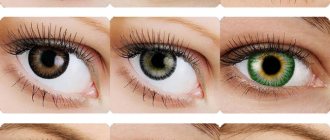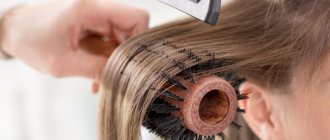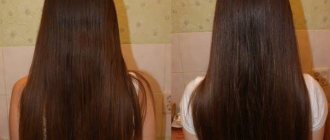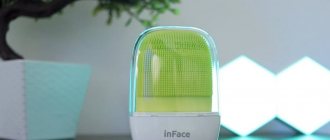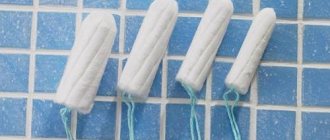In this article
- Classification of toothbrushes
- Classification of electric toothbrushes
- Choosing toothbrush bristles
- Selecting cleaning head parameters
- What influences the location of the fiber bundles?
- How to make the right choice?
The main tool that has allowed us to remove plaque from the surface of our teeth for centuries is the toothbrush. During its existence, this hygiene item has undergone numerous transformations, maintaining its main function - the cleanliness of the oral cavity. We will tell you what modern toothbrushes are like in this article.
Classification of toothbrushes
Today, the toothbrush market offers a huge range of models that differ in design, cleaning technology, material and other parameters. A clear classification helps to understand this diversity.
The most accurate, complete and modern classification is that of Honored Dentist, Doctor of Medical Sciences, Professor of Medical University and Academician of PANI S.B. Ulitovsky.
According to his classification, brushes are:
- children, teenagers and adults;
- hygienic, preventive and additional;
- manual, electrical and mechanical;
- straight and angular, with and without indication;
- artificial and natural bristles;
- one-, two-, three- and multi-level according to the nature of the arrangement of the beams;
- cut, rounded, polished, ground, combined (according to the degree of bristle processing);
- setron, nylon, perlon, derolon, polyurethane, combined - according to the bristle material;
- very soft, soft, medium hard, hard, very hard, mixed and combined - according to the stiffness of the bristles;
- with flat, narrow, thin, round, combined, mixed, hard and springy handles;
- small, medium and large - depending on the size of the handle;
- with corrugated, flat, concave, convex, horizontal, mixed, circular, vertical, universal, special, combined, mixed and without grip.
It can be difficult to understand such diversity without the help of a dentist, so we recommend consulting with your doctor.
Tips of bristles
Modern models use high-quality nylon fibers, which are carefully polished when cut.
- Pumpkin baked in the oven with honey: recipes
- Diet for losing weight by 10 kg
- Manicure with color transition - how to do it and what it’s called, video. Color transition in manicure, photo
The tips of the bristles depending on the model:
- Rounded ones are the least likely to cause injury and are suitable for most people.
- Pointed ones – thoroughly clean the teeth and the space between them.
- Blunt - effective for massaging the gums, improving microcirculation of blood in them.
Classification of electric toothbrushes
Today, electric toothbrushes are gaining popularity and may soon supplant regular manual ones. Their advantage is the high cleaning efficiency, which is possible thanks to the rapid movements and pulsations of the bristles. It is impossible to achieve this effect manually, so electric brushes are better than conventional ones at removing tartar, plaque, and cleaning hard-to-reach areas.
Electric toothbrushes have a built-in motor and a rechargeable battery or battery that allows them to operate autonomously.
Electric brushes, depending on their design and technology, are divided into three main types:
- Rotary.
- Sound.
- Ultrasonic.
The simplest among electric brushes are rotary ones. Their cleaning head rotates at high speed, providing mechanical removal of plaque and food debris from the surface of the teeth. They are accessible to users of any budget and are easy to use, but at the same time clean teeth better than manual brushes.
An example of high-quality rotational models is the B.Well MED-810 or CS Medica CS-465-M.
The operation of sonic brushes is based on more complex technology. The high-frequency generator creates a sound wave that causes the bristles of the cleaning head to pulsate at a high frequency. Thanks to such pulsations, the sonic brush not only removes plaque well, but also creates fine foam with oxygen bubbles in the mouth. By bursting, they remove contaminants in the most difficult areas of the oral cavity. In addition, the sonic brush gently massages the gums, is suitable for caring for braces, implants, and allows you to carefully clean gum pockets. Here are some great models: Panasonic EW-DL82-W820, CS Medica CS-161.
The ultrasonic model is similar to the sound one, the only difference being that it does not generate audible sound vibrations, but high-frequency ultrasound. It effectively destroys even complex pigmented plaque, penetrates hard-to-reach places, has a healing effect on the gums, and increases their permeability to toothpaste components. Popular models of ultrasonic brushes are Megasonex, Donfeel.
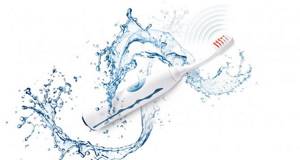
It should be taken into account that electric brushes have a number of contraindications and are not suitable for young children, so it is not recommended to use them without first consulting a dentist.
Choosing toothbrush bristles
The quality, material, length and other characteristics of the bristles of a toothbrush directly determine the effectiveness of oral hygiene.
There is a myth that everything natural is better than artificial. When applied to toothbrush bristles, this is not true. Natural ones have more disadvantages than advantages. They have a porous structure and a median channel in which bacteria accumulate and multiply, and they are also hard and severely scratch the gums. Artificial bristles are smooth, have no pores, dry quickly and are less susceptible to contamination by microorganisms, therefore they are considered safer. Modern materials for toothbrushes are soft and do not damage tooth enamel and gum surfaces when brushing.
The most important characteristic to pay attention to is the stiffness of the bristles. How to choose the right one for yourself?
- Sensitive.
This is a very soft bristle that has the most delicate effect on the oral cavity. This type of toothbrush is recommended for brushing teeth in case of inflammatory periodontal diseases.
- Software
Soft bristles are suitable for cleaning children's teeth, caring for sensitive gums and thin enamel. Dentists often recommend this type of brush for pregnant women and people with diabetes. In these conditions, there is often swelling, soreness of the gums and high vulnerability of the tissues surrounding the tooth, due to hormonal changes.
- Medium.
A medium-hard brush is suitable for the vast majority of people with healthy teeth. It provides a moderately strong effect on teeth and gums, effectively removing plaque without causing pain or discomfort.
- Hard.
The stiff bristles help remove stubborn plaque and are suitable for effective cleaning of removable dentures.
- Extra hard.
Very hard brushes should only be used as prescribed by a dentist, as they increase the risk of injury to the gums and damage to the enamel. This toothbrush is used if you are prone to stone formation.
Many toothbrush manufacturers combine bristles of different hardnesses into one model. For example, the central bristles are made more rigid for high-quality cleaning of chewing surfaces, and the side bristles are made softer for careful removal of dirt along the gum edge.
In addition to the stiffness of the bristles, the degree of processing is important. Most modern brushes have rounded bristles to prevent injury to the gums. Brushes with pointed bristles are less common - they penetrate well into the interdental spaces, but can damage soft tissues.
Selecting cleaning head parameters
The main functional part of a toothbrush is the head, so you should choose it very carefully. It is believed that models with a small cleaning head are more effective at removing plaque and other contaminants. With their help, you can clean hard-to-reach areas, distant teeth, including wisdom teeth. A large cleaning head is less effective at such tasks because its size makes it difficult to control.
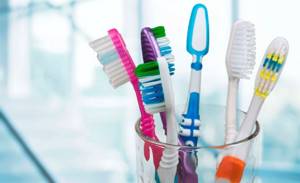
The size of the cleaning head is selected based on the age of the user:
- Children's brushes have an optimal length of the working part of 18-25 mm and a width of 7-9 mm.
- Adults are 25-30 mm long and 7.5-11 mm wide.
When choosing the optimal size of the cleaning head, ensure that it covers a maximum of 2-3 teeth. In addition to length and width, the number of tufts of bristles differs between cleaning heads. In children's models there should be 23, in teenagers - 39-40, in adults - 48-55.
It is better to give preference to round cleaning heads. They are considered safer and more maneuverable. Rectangular heads are more bulky and can damage the oral mucosa, so they should not be chosen for children, and adults should use them with caution.
Dentists recommend changing your toothbrush every 2-3 months, because over time, germs accumulate on it, and wear of the bristles reduces the quality of cleaning by 50%. To remember to change your toothbrush promptly, you can choose a model with an expiration indicator: as it wears, its colored bristles will lose color.
Advantages and disadvantages
Having appeared not so long ago, the mono-beam brush immediately became in demand. This popularity is due to the advantages that distinguish this product from similar products:
- high quality of crown cleaning due to the unique structure of the bristles;
- due to the easy penetration of the bristles into the gum pocket area, high-quality removal of bacterial deposits ;
- the shape of the head allows for targeted cleaning , which is very important if there are injuries and ulcerations on the mucous membrane;
- The advantage is a wide selection of bristle types and head sizes , so that the device can be used even by children;
- copes well with removing dirt from orthodontic appliances and dentures .
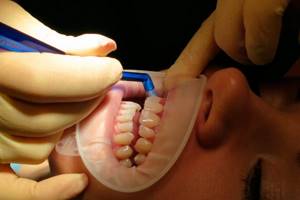
In addition to its advantages, this design also has some disadvantages:
- the duration of the cleansing procedure, since the head has a small area of influence;
- need to be used together with a standard brush. The monobeam option acts only as an auxiliary one .
What influences the location of the fiber bundles?
To care for interdental spaces and clean hard-to-reach areas under braces, a so-called mono-beam brush is used. It has only one bunch of thin, flexible bristles, thanks to which it can penetrate problem areas and perfectly remove plaque.
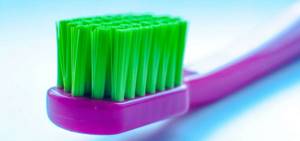
Most toothbrushes for standard oral care have several dozen tufts, which can be arranged in several rows (usually three or four). More effective cleaning is provided by those models in which the height of the beams in different rows is different. If there are short bristles in the center and long bristles at the edges, then the former perfectly remove plaque in the central grooves of the teeth, and the latter remove plaque from the surfaces of the teeth and interdental spaces. The oblique arrangement of the beams facilitates better penetration of the brush under the periodontal margin and cleansing of the cervical area.
Who invented it?
The ancient peoples of Africa can be considered the inventors of the monotuft brush . They used branches of the Miswak and Sotiu trees to clean their teeth. Thin branches were cut into small pieces, soaked in water, and then soaked on one side.
This is how the “progenitor” of the modern mono-beam brush was made. Modern manufacturers have taken advantage of the idea of their ancestors and developed a similar device, only using the latest materials and technologies.

How to make the right choice?
The classification of toothbrushes clearly shows how great their diversity is. To make the right choice for your oral health, you need to know the condition of your teeth and gums. Therefore, it is advisable to discuss the choice of a brush for yourself or your child with your dentist after a thorough examination of the oral cavity. The specialist will recommend which toothbrush model can most effectively solve individual hygiene problems and advise additional oral care products.
You can always purchase a high-quality toothbrush and other oral hygiene products in our online store.
